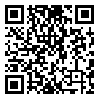Volume 18, Issue 4 (3-2021)
sjsph 2021, 18(4): 373-388 |
Back to browse issues page
Download citation:
BibTeX | RIS | EndNote | Medlars | ProCite | Reference Manager | RefWorks
Send citation to:



BibTeX | RIS | EndNote | Medlars | ProCite | Reference Manager | RefWorks
Send citation to:
Mosadeghrad A M, Heydari M, Ramandi S, Abbasi M. Strategic Analysis of the Iranian Health Financing System: A Scoping Review. sjsph 2021; 18 (4) :373-388
URL: http://sjsph.tums.ac.ir/article-1-5959-en.html
URL: http://sjsph.tums.ac.ir/article-1-5959-en.html
1- PhD. Associate Professor, Department of Health Management and Economics, Health Information Management Research Center, School of Public Health, Tehran University of Medical Sciences, Tehran, Iran
2- Ph.D. student, Department of Health Management and Economics, School of Public Health, Tehran University of Medical Sciences, Tehran, Iran
3- Ph.D. student, Department of Health Management and Economics, School of Public Health, Tehran University of Medical Sciences, Tehran, Iran ,Ma-abbasi@razi.tums.ac.ir
2- Ph.D. student, Department of Health Management and Economics, School of Public Health, Tehran University of Medical Sciences, Tehran, Iran
3- Ph.D. student, Department of Health Management and Economics, School of Public Health, Tehran University of Medical Sciences, Tehran, Iran ,
Abstract: (3840 Views)
Background and Aim: The health system financing is the process of collecting, pooling and managing financial resources and purchasing healthcare services. Health financing plays an important role in achieving the health system goals and objectives specially universal health coverage. The aim of this study was to strategically analyze the Iranian health financing system and recommend strategies to strengthen it.
Materials and Methods: Using the scoping review method, all published studies about the strengths, weaknesses, opportunities and threats of the Iranian health financing system were searched in eight databases including "PubMed", "Scopus", "Science Direct", "Embase", "ProQuest", "SID" and "Magiran", as well as the "National Database of Medical Science Theses" and two search engines, namely, "Google" and "Google scholar". Finally, 29 studies were selected and analyzed using the framework analysis method and MAXQDA software.
Results: Extended health insurance coverage, reduced out-of-pocket payments following the national health transformation plan, and increased healthcare tariffs were the strengths of the Iranian health financing system. On the other hand, regressive financing, high out-of-pocket payments and increased number of health insurance companies were the weaknesses of Iran’s health financing system. Political sanctions, financial crises and increased healthcare demands were the threats, while supportive laws, the NGO’s financial support, increased number of health care organizations and modern technologies were among the important opportunities for the Iranian health financing system. Increasing the health system financial resources through prepayments, structural and policy unification of health insurance system, health service tariff reform and enhancing health system efficiency and healthcare services quality are essential to strengthen the Iranian health financing system.
Conclusion: The Iranian health financing system is not resilient and faces several challenges. The health system policy-makers and senior managers should adopt the recommended strategies to strengthen the national health financing system.
Materials and Methods: Using the scoping review method, all published studies about the strengths, weaknesses, opportunities and threats of the Iranian health financing system were searched in eight databases including "PubMed", "Scopus", "Science Direct", "Embase", "ProQuest", "SID" and "Magiran", as well as the "National Database of Medical Science Theses" and two search engines, namely, "Google" and "Google scholar". Finally, 29 studies were selected and analyzed using the framework analysis method and MAXQDA software.
Results: Extended health insurance coverage, reduced out-of-pocket payments following the national health transformation plan, and increased healthcare tariffs were the strengths of the Iranian health financing system. On the other hand, regressive financing, high out-of-pocket payments and increased number of health insurance companies were the weaknesses of Iran’s health financing system. Political sanctions, financial crises and increased healthcare demands were the threats, while supportive laws, the NGO’s financial support, increased number of health care organizations and modern technologies were among the important opportunities for the Iranian health financing system. Increasing the health system financial resources through prepayments, structural and policy unification of health insurance system, health service tariff reform and enhancing health system efficiency and healthcare services quality are essential to strengthen the Iranian health financing system.
Conclusion: The Iranian health financing system is not resilient and faces several challenges. The health system policy-makers and senior managers should adopt the recommended strategies to strengthen the national health financing system.
Type of Study: Research |
Subject:
Public Health
Received: 2021/03/15 | Accepted: 2021/03/15 | Published: 2021/03/15
Received: 2021/03/15 | Accepted: 2021/03/15 | Published: 2021/03/15
Send email to the article author
| Rights and permissions | |
 |
This work is licensed under a Creative Commons Attribution-NonCommercial 4.0 International License. |





